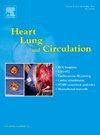经皮冠状动脉介入术后院内大出血的术前相关因素:一项系统综述。
IF 2.2
4区 医学
Q2 CARDIAC & CARDIOVASCULAR SYSTEMS
引用次数: 0
摘要
背景:经皮冠状动脉介入治疗(PCI)术后出血的术前风险评估对临床质量登记、疗效监测,最重要的是对临床决策至关重要。本系统综述旨在总结pci术后院内大出血的术前相关因素。方法:系统检索截至2023年12月无语言限制的MEDLINE、EMBASE、CINAHL、Web of Science、Scopus等数据库,确定pci术后院内大出血的术前相关因素。数据以描述性的方式进行了系统的评估和总结,按照预测模型研究系统评估的关键评估清单和数据提取。结果:检索到17,997篇研究,其中32篇纳入最终评估。pci术后院内大出血总发生率为3.21%。100个独立的术前因素与院内大出血显著相关,其中17个在各种研究中反复出现的因素被确定为潜在因素。在各种模型中反复使用的因素包括但不限于肾脏疾病(n=25, 78.1%)、急性冠状动脉综合征(n=21, 65.6%)、年龄(n=17, 53.1%)、心脏事件(n=15, 46.9%)、抗凝治疗/药物(n=12, 40.6%)、贫血/血红蛋白/红细胞压积(n=11, 34.4%)、经皮通路部位(n=10, 31.3%)、糖蛋白抑制剂(n=10, 31.3%)、体表面积(n=9, 28.1%)、高血压(n=9, 28.1%)、心力衰竭或疾病(n=9, 28.1%)。8篇(25.0%)文章采用归算方法处理缺失值。26篇(81.2%)文章使用逻辑回归,3篇(9.4%)文章使用机器学习方法。11篇(34.4%)文章通过内部验证报告了模型的识别能力,受试者工作特征评分范围为0.620(95%置信区间0.575-0.665)至0.837(95%置信区间0.772-0.903)。结论:本研究确定的17个术前因素可以帮助临床医生平衡缺血和出血风险,并实施减少出血的策略。风险调整模型需要通过纳入这些因素,适当处理缺失值和模型验证,以及使用机器学习方法来进一步提高其质量。本文章由计算机程序翻译,如有差异,请以英文原文为准。
Preoperative Factors Associated With In-Hospital Major Bleeding After Percutaneous Coronary Intervention: A Systematic Review
Background
Preoperative risk assessment of bleeding after percutaneous coronary intervention (PCI) is vital for clinical quality registries, performance monitoring, and, most importantly, for clinical decision-making. This systematic review aims to summarise preoperative factors associated with post-PCI in-hospital major bleeding.
Method
The MEDLINE, EMBASE, CINAHL, Web of Science, and Scopus databases until December 2023 without any language restriction were systematically searched to identify preoperative factors related to in-hospital major bleeding post-PCI. Data were systematically appraised and summarised in a descriptive manner, following the CHecklist for critical Appraisal and data extraction for systematic Reviews of prediction Modelling Studies.
Results
The search yielded 17,997 studies, of which, 32 articles were included for the final assessment. The pool prevalence of in-hospital major bleeding post-PCI was 3.21%. One hundred independent preoperative factors were significantly associated with in-hospital major bleeding and, of them, 17 factors appeared repeatedly in various studies were identified as potential factors. Factors that repeatedly used in various models were but not limited to renal disease (n=25, 78.1%), acute coronary syndrome (n=21, 65.6%), age (n=17, 53.1%), gender (n=17, 53.1%), cardiac events (n=15, 46.9%), anticoagulant therapy/drugs (n=12, 40.6%), anaemia/haemoglobin/haematocrit (n=11, 34.4%), percutaneous access site (n=10, 31.3%), glycoprotein inhibitors (n=10, 31.3%), body surface area (n=9, 28.1%), hypertension (n=9, 28.1%), and heart failure or disease (n=9, 28.1%). Eight (25.0%) articles used the imputation method to treat missing values. Logistic regression was used by 26 (81.2%) articles, and three (9.4%) articles used machine learning method. Eleven articles (34.4%) reported the model’s discrimination ability using internal validation with receiver operating characteristics score ranging from 0.620 (95% confidence interval 0.575–0.665) to 0.837 (95% confidence interval 0.772–0.903).
Conclusions
The 17 preoperative factors identified in this study can help clinicians balance ischaemic and bleeding risks and implement strategies to reduce bleeding. Risk adjustment models need further improvement in their quality through the inclusion of these factors, appropriately handling missing values and model validation, and using machine learning methods.
求助全文
通过发布文献求助,成功后即可免费获取论文全文。
去求助
来源期刊

Heart, Lung and Circulation
CARDIAC & CARDIOVASCULAR SYSTEMS-
CiteScore
4.50
自引率
3.80%
发文量
912
审稿时长
11.9 weeks
期刊介绍:
Heart, Lung and Circulation publishes articles integrating clinical and research activities in the fields of basic cardiovascular science, clinical cardiology and cardiac surgery, with a focus on emerging issues in cardiovascular disease. The journal promotes multidisciplinary dialogue between cardiologists, cardiothoracic surgeons, cardio-pulmonary physicians and cardiovascular scientists.
 求助内容:
求助内容: 应助结果提醒方式:
应助结果提醒方式:


